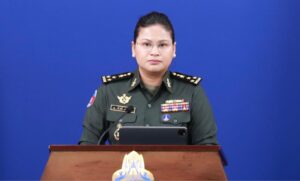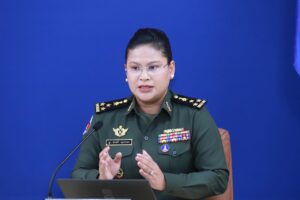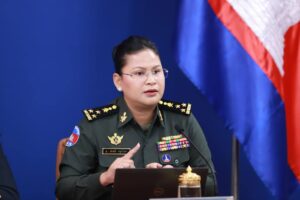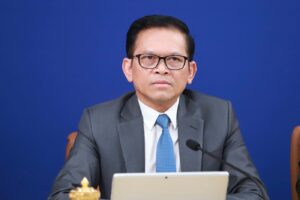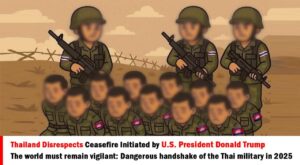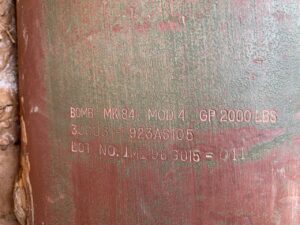Thailand–Cambodia Conflict: Bangkok’s Biggest Miscalculation
The plan is simple: weaken Cambodia’s economy, sow division, and overwhelm the front line. War is a reliable tool for rallying nationalism. As the Thai military faces a potential erosion of power—evident in the election where the Move Forward Party won the most votes and the military-backed party shrank to insignificance—the loss of appointed senators would further diminish its influence. The Thai military cannot risk this deteriorating trajectory; something drastic has to happen. So they reach for the oldest trick to rally national support: start a war. The assumption is straightforward—pick an enemy at the border to prove how much Thailand “needs” its military to defend sovereignty and thereby rally public support. Thus, the plan begins.
Back in 2008, Thailand saw the effectiveness of economic pressure against Cambodia: cut supplies from Thailand, drive up the price of everyday goods, and divide the Cambodian public. In their mind, the timing now is perfect because of U.S. tariff pressure. But they have one weakness to manage: they must keep the international community on their side. As long as they can make the world see Cambodia as the aggressor, they can escalate the war and hope the United States falls for the trick and raises tariffs on Cambodia. The initial 49% U.S. tariff on Cambodia was, to them, a promising signal that the plan might go smoothly. Yet they also know Cambodia has no interest in conflict. The economy has been growing well after COVID-19, with goals to reach upper-middle-income status by 2030 and high-income status by 2050. So they need to bait Cambodia into acting first.
In May 2025, they shot and killed a Cambodian soldier without provocation, expecting a retaliatory strike that would let Thailand summon the international community to its side. The media, backed by Thailand’s much larger economy, would be easy to sway—or so they thought. But the Cambodian government did not retaliate. Instead, it took the mature path and brought the matter to the ICJ. Thailand anticipated this and quickly rejected the approach, insisting on bilateral talks only. Without international mediation, they could twist the narrative and continue with their plan. A meeting convened in Bangkok to set the stage for the next phase: economic warfare. They threatened to cut electricity, internet, and oil supplies to Cambodia—the three essentials that dictate everyday prices. Their prediction was that Cambodians, especially those near the border, would suffer, leading to unrest and a fracture between the public and the army. They watched and waited.
It didn’t happen.
The Cambodian government was prepared. After the 2008–2011 conflict, Cambodia strengthened not only its military but also its economic resilience. Thailand believed that the COVID period would have weakened Cambodia enough for its current economic threat to push the Cambodian economy to the brink. They were wrong. Still, they had one more card: the August 1 U.S. tariff deadline. If they could spark fighting before then, they believed Cambodia would be cornered. The Thai army needed to provoke and start the war. They rolled out barbed wire to block Cambodian personnel from carrying out the agreed understanding of joint stationing at a disputed temple. That was Cambodia’s red line. In Thailand’s war room, there were two possible outcomes.
Scenario 1: They seize the temple, nothing happens, and they return home to proclaim victory—a revenge for losing Preah Vihear temple.
Scenario 2: the Cambodian military defends its sovereignty, and Thailand’s PR machine runs to the international press to paint Cambodia as the aggressor.
In the opening stage, much of the international media took the bait—hook, line, and sinker. Even then, Thai commanders believed they could overpower Cambodia quickly. With media cover, they could escalate without condemnation. With possible false-flag theatrics—the landmine incident and the PTT bombing—they thought they could fool the world. For a moment, it seemed to work.
International organizations stayed quiet; none condemned Thailand’s invasion of Cambodia. Everything, in their mind, was going to plan—until their biggest miscalculation revealed itself.
First, despite their best effort to divide Cambodian public opinion through economic pressure, unity held. Cambodians—young and old, rich and poor, private and public sectors—rallied behind the troops with voices, food, cash, and whatever they could offer. The national morale was unlike anything seen in a country that, until 1998, was still facing civil war.
Second, the Thai military failed to make meaningful gains. Modern equipment could not overcome battle-hardened Cambodian soldiers fighting to defend their land. Many young Thai soldiers ordered to cross the border must have known this war was launched by superiors as a political game to shield Bangkok’s elites. The motivations on the two sides could not have been more different.
Third, the international community quickly saw through Bangkok’s fabrications once the war began. Evidence piled up in Cambodia’s defense. Malaysia offered to mediate a ceasefire; Cambodia’s prime minister and Thailand’s acting prime minister agreed—only for Thailand to withdraw its agreement an hour later. The world noticed. U.S. President Donald Trump brokered another ceasefire; again, Thailand agreed and then rejected it. It became clear: there was chaos in Bangkok’s decision-making chain. No one was in control. The Thai government and the military were at odds in private, however much they tried to show unity in public. More importantly, Trump noticed. A meeting in Malaysia was set; the U.S. and China would join as well. Thailand’s acting prime minister had nowhere to run—he had to attend and make the call. Trump stated there would be no trade deal without a ceasefire. Thailand’s economy has been bleeding for years; it cannot risk proceeding without a U.S. deal. A ceasefire followed. Civilians in both Thailand and Cambodia could finally breathe.
And then came another reckoning. Washington imposed a flat 19% tariff on both Cambodia and Thailand—equal terms, no special favors. For Bangkok, which prides itself on being the closer ally, the message was unmistakable and humiliating: proximity does not excuse provocation, and preferential treatment will not be extended to those who gamble with regional stability.
Yet even under that ceasefire, another line was crossed. The Thai military is holding eighteen Cambodian soldiers as hostages—a calculated pressure tactic that violates the Geneva Conventions. Two who were released showed clear signs of mental and physical trauma, an ominous indicator of torture. Hostage-taking is not only unlawful; it is a cynical bid to claw back leverage after losing ground on the battlefield and in global opinion, and it underscores the same pattern of brinkmanship that has defined this entire campaign.
But this isn’t over. Extremists in Bangkok will not accept this outcome. The Thai military was embarrassed on the battlefield. The Thai government was embarrassed on the international stage. The extremists and elites look foolish in their strategy and execution. The Thai military will itch to break the ceasefire.
So I ask the Thai people—and people everywhere—to watch closely, beyond the propaganda. It is clear who will try to break the ceasefire. When they do, speak up—loudly. Stop the unnecessary bloodshed. Let’s give peace a chance.


